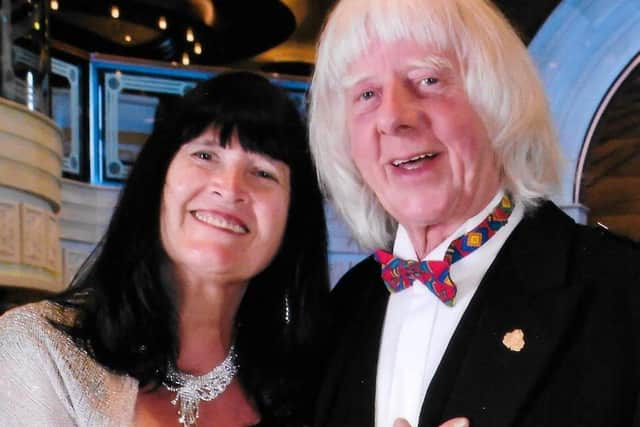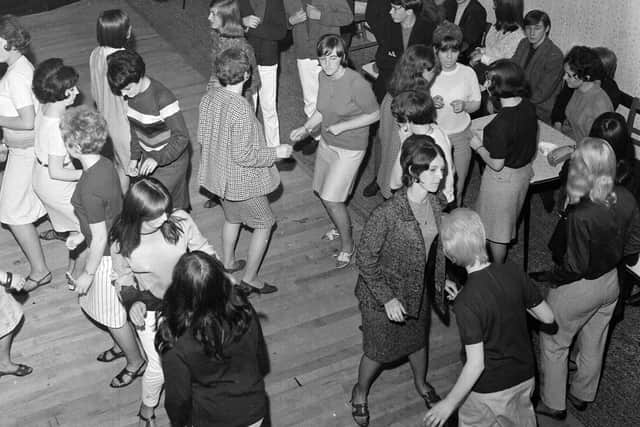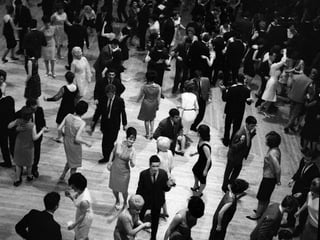‘Are ye dancin’?’: 1960-69: When Scotland's youth took control
The 1960s witnessed the birth of the modern night out. Dressed up youngsters packed out dance halls up and down the country to have a fab time, watch their favourite groups and hopefully end the night with the much sought after lumber.
Music industry veteran Eddie Tobin, former manager of the Sensational Alex Harvey Band, Nazareth and Billy Connolly among others, is a font of knowledge when it comes to discussing the origins of modern nightclubbing in Scotland.
Advertisement
Hide AdAdvertisement
Hide AdIn the 1960s, Tobin was in charge of Glasgow beat group the Bo Weavles and immersed in the profound cultural revolution that was taking shape.
Speaking to The Scotsman, Tobin said: “It was in the ‘60s that groups became the basis of the whole dance hall experience. The Musicians Union at that time dictated how many could be in a band. You couldn’t have less than a certain number, which turned out to be four – that’s where the idea of a beat group arose from.
“You had big bands in all the major dance halls in Glasgow and Edinburgh, but what would happen is they would book a beat group in the middle of the big band’s set. The stage would revolve, big band would depart, and the beat group would appear.
“Eventually it developed that somebody said, ‘what do we need the big band for?’”
Derek Nicol worked as a promoter in the 1960s bringing top bands to venues all over Scotland and outside of the major cities. He says people would travel great distances to follow their favourite groups.


He said: “When you were promoting groups in the early Sixties, the headline would be, ‘DANCING TONIGHT..’ with whatever group was on – then The Beatles came on the scene.
"From that point the dancing was secondary. People came for the main group and stood there watching them. Dancing happened as well of course, but the main feature was the group that was playing.
"One of my contracts was the running of all the entertainment on the Isle of Arran during the beat period. We secured some really big names like the Kinks and Ambrose Slade, before they became just Slade.
Advertisement
Hide AdAdvertisement
Hide Ad“There was a show we did at Paisley ice rink and altogether on the same bill we had The Who, The Small Faces, Arthur Brown, Joe Cocker and The Mindbenders. All of them playing through this little sound system that would put in your living room today.”


Prior to 1976 when the alcohol licensing laws changed, nightclubbing in Scotland was almost universally a dry experience. Even on a weekend, pubs would close at 10pm sharp, and a surge of humanity would descend on the dance halls, the vast majority hoping for a close encounter with the opposite sex.
Throughout the late 1960s, Dougie Cochrane was lead singer in Edinburgh band Tandem. Their manager Tam Paton was also handling a pre-fame Bay City Rollers.
“It was a totally different scene altogether back then,” says Dougie. “Kids weren’t interested in drinking or taking drugs, they just wanted to go out dancing and enjoy themselves and all the main Edinburgh clubs, like the Gamp, the Place and the Top Storey were all packed to the rafters.
"Revellers drank Coca-Cola and orange that’s all there was. Full focus on the dance floor and having a good time.”
One of the pivotal – pun intended – moments that helped define nightclubbing culture in the early 1960s was the arrival of the twist. Eddie Tobin says the Chubby Checker-fired phenomenon practically killed off the close contact and dances that had went before. Crucially, due to the simplicity of the twist, dancing suddenly became accessible to everyone.
“To jive took skill - you needed two legs,” Eddie explains. “Twisting and the other American phenomenons that followed changed everything.
"There was an unbelievable boom in the Chubby Checker era that had a huge impact on the dance halls and the next time that happened – and I waited for it to happen – was John Travolta in Saturday Night Fever. Those films absolutely rammed nightclubs, it was incredible."You didn’t need to be able to dance, you could just go and shake yourself into bits.”
Advertisement
Hide AdAdvertisement
Hide AdThe beat group explosion hit its zenith at the decade’s midway point. In 1965, The Beatles and the Stones led the way with a growing army of like-minded quartets and quintets snapping at their vaunted heels.
Dougie Cochrane says his band Tandem were every bit as popular as their city rivals the Bay City Rollers in the 1960s.
He says: “The youth just came out in their droves for the beat groups. Nobody was interested in ballroom bands anymore – that was old hat.
“Moving towards 1967, my band Tandem and the Bay City Rollers – before they became famous - were the top bands with huge followings and rivalries. Behind the scenes though, we were all friends of course.
“Tandem used to take up to five bus loads of fans to watch us play outside the city – not bad for a band that hadn’t yet had a hit single.
“Ultimately, Tam Paton put all his efforts into the Rollers. They were willing to play the game of not having girlfriends and what not. We weren’t.”
For Eddie Tobin the biggest draw of all was Glasgow group the Beatstalkers - a band famously referred to in the music press as "the Scottish Beatles".
"The Beatstalkers phenomenon was bigger than anything I’d ever seen,” says Eddie. “They arrived in Glasgow one time and officials had to close Central Station. They tried to go to London by plane and couldn’t take off because folk were hanging on to the wheels.
Advertisement
Hide AdAdvertisement
Hide Ad“It was a mania that people wouldn’t believe, they were absolutely enormous.”
But nightclubbing in the 1960s wasn’t all handbags, glad rags, and alcohol-free innocence. These were violent times, says Eddie Tobin, and Glasgow clubs in particular worked hard to keep the gangs at bay.
He explains: “The public today wouldn’t tolerate the violence we used to see. On some nights there would be 50-60 guys running down the street with weapons.
“The stewards had to fight to win the dance hall, because if a gang came in and won, the police weren’t going to turn up – there would only be four of them on a beat.
"You had to win every fight or the bad guys were running your hall.”
A message from the Editor:
Thank you for reading this article. We're more reliant on your support than ever as the shift in consumer habits brought about by coronavirus impacts our advertisers.
If you haven't already, please consider supporting our trusted, fact-checked journalism by taking out a digital subscription at https://www.scotsman.com/subscriptions.
Comments
Want to join the conversation? Please or to comment on this article.
